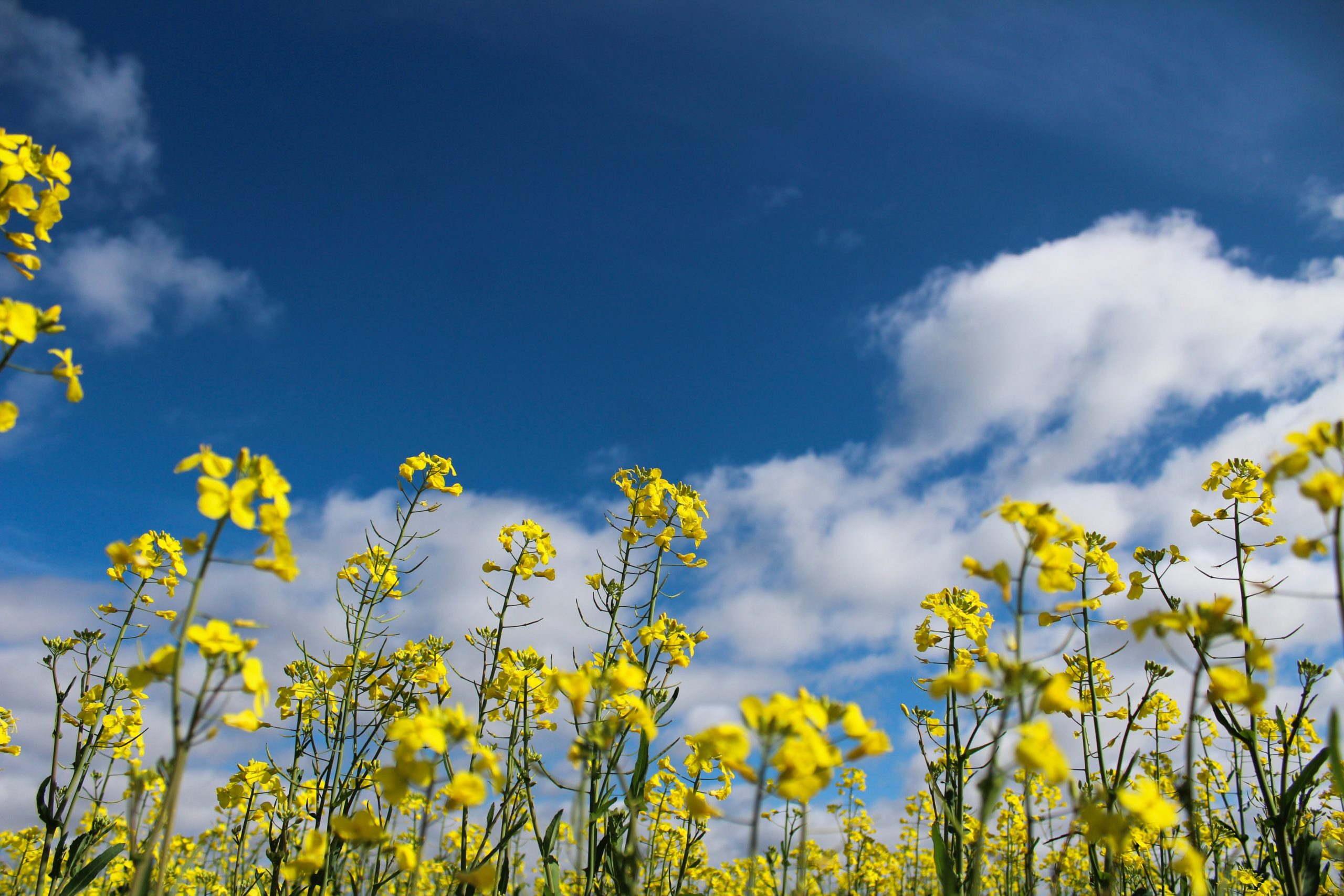Following are some general BMPs when it comes to late seeding, broadcast seeding and general crop solutions with a late spring. WE KNOW THIS – Broadcasting generally produces lower yields than seeding with a drill.
CANOLA
LATE SEEDING WITH A DRILL
- Seeding after the middle of June is getting late for canola
- Consider switching to an earlier maturing variety
- Increase seeding rate to 7-8 plant/ft2 to compensate for non-uniform seed depth
- Seed shallow – canola seeded at ½ inch can emerge 3-4 days earlier than canola seeded deeper
- Consider 85-95% of recommended N – helps canola from staying too long in the vegetative stage
- Seed place as much P as possible for pop up effect
BROADCASTING
Seeding
- Requires good seed to soil contact in a firm seed bed
- Avoid fields with a thick layer of thatch
- Cultivating ahead of the floater could just make seed bed worse – clumpy, crusty
- A loose, fluffy seed bed can also cause issues with seeding depth
- Increase seeding rate to 7-8 plant/ft2 to compensate for non-uniform seed depth
- Harrow after the floater leaves the field at a right angle to the floater pattern – this will help spread out seed and fertilizer
- Packing after seeding could improve success
- RULE OF THUMB: If it is too wet to harrow a field – it is too wet to broadcast
Fertilizer
- Starter P is not enough when broadcasting – apply full rate to help with seed to prill proximity
- Use Jumpstart on canola seed to provide another P source and emergence boost
- Broadcast P is only half as efficient as banded.
- Treating with Jumpstart can help solubilize soil P
- Apply Yield+ from Xcite Bio at herbicide timing – can provide 30% more P to crops
- If mixing fertilizer and seed – broadcast within a few days – fertilizer is abrasive and could reduce seed viability
Post Seed / Pre-Emerg Herbicide
- Seeds on the surface are highly vulnerable to herbicide
- Do not apply post-seed/pre-emergence glyphosate on Liberty Link and Clearfield canola varieties that have been broadcast and remain on the soil surface
- Roundup Ready varieties can tolerate glyphosate at this early stage
Weed Control – Late & Broadcast
- IMPORTANT to control weeds pre seed
- Canola on canola –
- Need to control volunteers
- Currently researching what products can be used with broadcasting
- Be vigilant scouting for flea beetles, cutworms and blackleg
Disease Control – Late & Broadcast
- With our current moisture level we may be at risk for Sclerotinia.
**NOTE: Seeding canola with a plane or helicopter should only be considered as a last resort. Canola is light and will not penetrate the soil when seeded from the air
WHEAT
Broadcasting wheat is the last resort. This will not result in a good stand BUT is a better option than chem fallow!
LATE SEEDING
- Moving into June is getting late for wheat
- Increase seeding rates 1% for each day planting is delayed to a maximum population of 38-40plant/ft2. This helps prevent tillers that delay maturity.
- Seed shallow – 1 inch
- Take note of your variety and it’s days to maturity
BROADCASTING
- Wheat, barley, oat, triticale, rye have a different root system than canola or soybean
- If possible, run over the broadcast wheat with some form of tillage – if it sits on top of the ground it is subject to both getting adequate moisture to germinate, and wind injury before the 3 leaf stage (when it starts making nodal roots)
FERTILIZER
- Consider lowering N – should not be over 110 lbs if seeding into June
- Seed place as much P as possible for pop up effect
- BROADCASTING P is only half as efficient as banded
- Treating with Bionic can help solubilize soil P
- Apply Yield+ from Xcite Bio at herbicide timing – can provide 30% more P to crops
WEED CONTROL – LATE & BROADCAST
- Need to burn off land if broadcasting. Looking into if any products can’t be used in a broadcast situation
DISEASE CONTROL – LATE & BROADCAST
- Late seeded wheat will be prone to Fusarium Head Blight – plan a fungicide application
- Wheat Midge will also be a problem as late seeded wheat will be susceptible
OTHER POINTS TO CONSIDER:
2022 Crop Insurance Deadlines and Crop Maturity
 Seeding Dates
Seeding Dates
- Seeding up to June 20 – will need frost free days until Sept 20.
Switching Crops
- Barley/Peas have shorter maturities but both are affected by July heat.
- Oats can be longer in maturity – watch variety. Seeding later than June 10 for seed oats is getting late. Oats for forage is okay at this date.
- Soybeans seeded in June is not a good practice. Need a plant developed by summer solstice – June 21. Soybeans will also need a long backend frost free. Longer than wheat or canola.
Top Dressing
We have AMPLE time to dribble band or float Nitrogen!
- Up to 5 leaf for wheat
- Up to early bolt for canola
- OR within 5 weeks of crop emergence
ALL top dressed nitrogen will need to be stabilized. See the Stabilizer Better/Best list!
GENERAL AGRONOMICS:
- Canola is a very plastic plant – meaning it can deal with many stresses better than other crops
- We are in a good radius for crushers that can deal with canola green seed in the event of a frost
- Avoid the use of Plant Growth Regulators like Manipulator and Moddus – they extend crop maturity!
- Wet land can get wetter without crop establishment as there is no growth to draw out moisture
- Maturity of the crop will be more variable with broadcast – timing of fungicides will be more of a challenge

